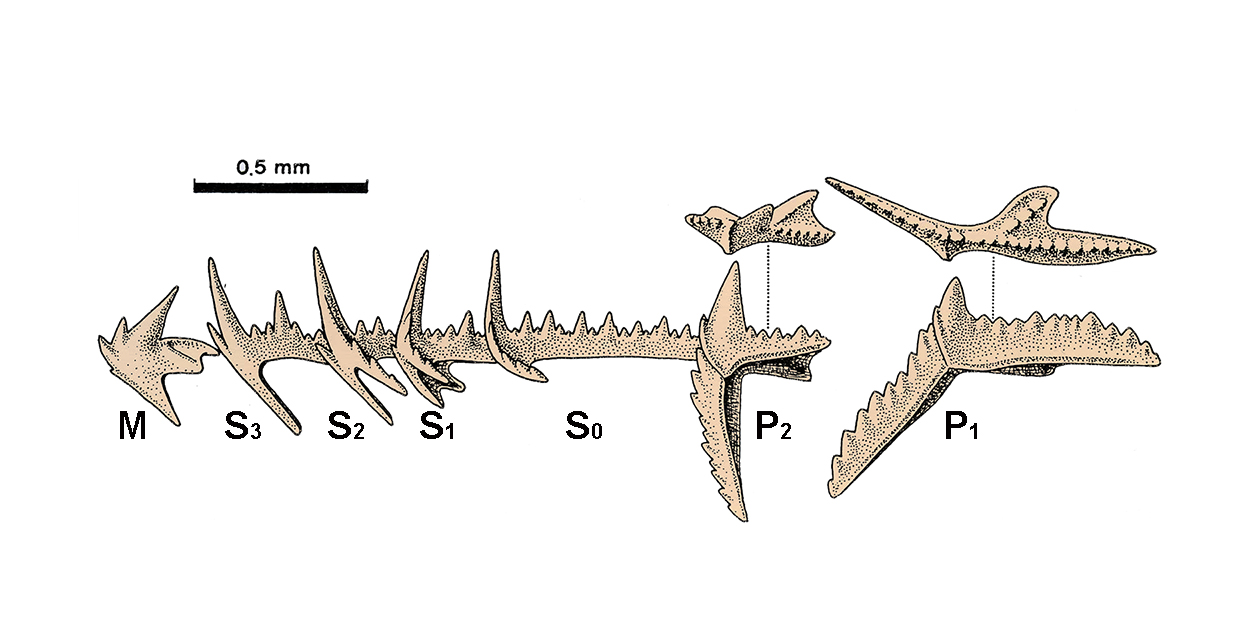Rhodesognathus polonicus
Sugerowana cytacja: Moczyński 2018. Rhodesognathus polonicus (Dzik, 1976) Ikonoteka (http://ikonoteka.paleo.pan.pl/xwiki/bin/viewrev/Species/Rhodesognathus+polonicus)
Diagnoza The P2 elements with a bifurcated inner process, P1 elements with a small, usually denticulated posterior process, M elements with sharp, strongly inclined cusp. Synonims: Holodontus superbus, Ligonodina delicata, Ambalodus pulcher, Tetraprioniodus delicatus, Bednarczyk, 1971; Rhodesognathus elegans polonicus Dzik, 1976; partirn Amorphognathus tvaerensis, DZIK 1976; Rhodesognathus elegans polonicus, DZIK 1978. Porównanie The species seems to be a successor of the Welsh Rhodesognathus inaequalis, from which it differs mostly in having a smaller and always undivided posterior process of the P1 elements. The most widespread species of the genus, R. elegans has, as is documented by samples from the Lesieniec borehole, a very similar appearance of the M and other elements of the S series. Their close similarity to cooccurring elements of Amorphognathus is the reason for the late recognition of the apparatus composition in the genus . R. elegans differs from R. polonicus in lacking additional processes in the P1 and P2 elements. Autekologia Występowanie geograficzne Mójcza, Holy Cross Mountains, Poland. Zasięg czasowy In Mójcza the species occurs from 1.8 to 2.4 m above the bentonite (A. tvaerensis/superbus transition zone). Materiały muzealne ZPAL Literatura Dzik, J. 1994. Conodonts of the Mójcza Limestone. In: J. Dzik, E. Olempska, & A. Pisera. Ordovician carbonate platform of the Holy Cross Mountains. Palaeontologia Polonica 53, 43-128. |
|


